A Brief History Of Slatnar
Slatnar may be new on the ski touring scene, but the company has a 50-year history in metalworking and carbon parts and, in the last 20 years or so, has been a leading ski jumping brand. The Slatnar family has run the company in Slovenia since 1972. As I’m sure readers can imagine, the ski jumping market is a small one—so small that Elan, a leading manufacturer of jumping skis, ceased its production in 2016. Slatnar took over the old Elan machinery and production to keep the industry afloat.

Fast forward to 2023, and a US Ski Jumping coach stopped by Skimo Co in Salt Lake City to show off a ski touring binding from the company that makes the jumping bindings many of their athletes use. This inside line meant that until very recently, Skimo Co was the only place on the internet with any information on the bindings.
Let’s get one thing out of the way early: with any new binding, there is certain to be chatter about various brands having a bad history with Gen 1 bindings. While Slatnar is not immune to this concern, their history in Ski Jumping is encouraging because they know how to make a reliable product, and the stakes of failure are high in jumping and touring. In some sense—we are here to verify them so our readers don’t have to feel like test dummies.
The Bindings
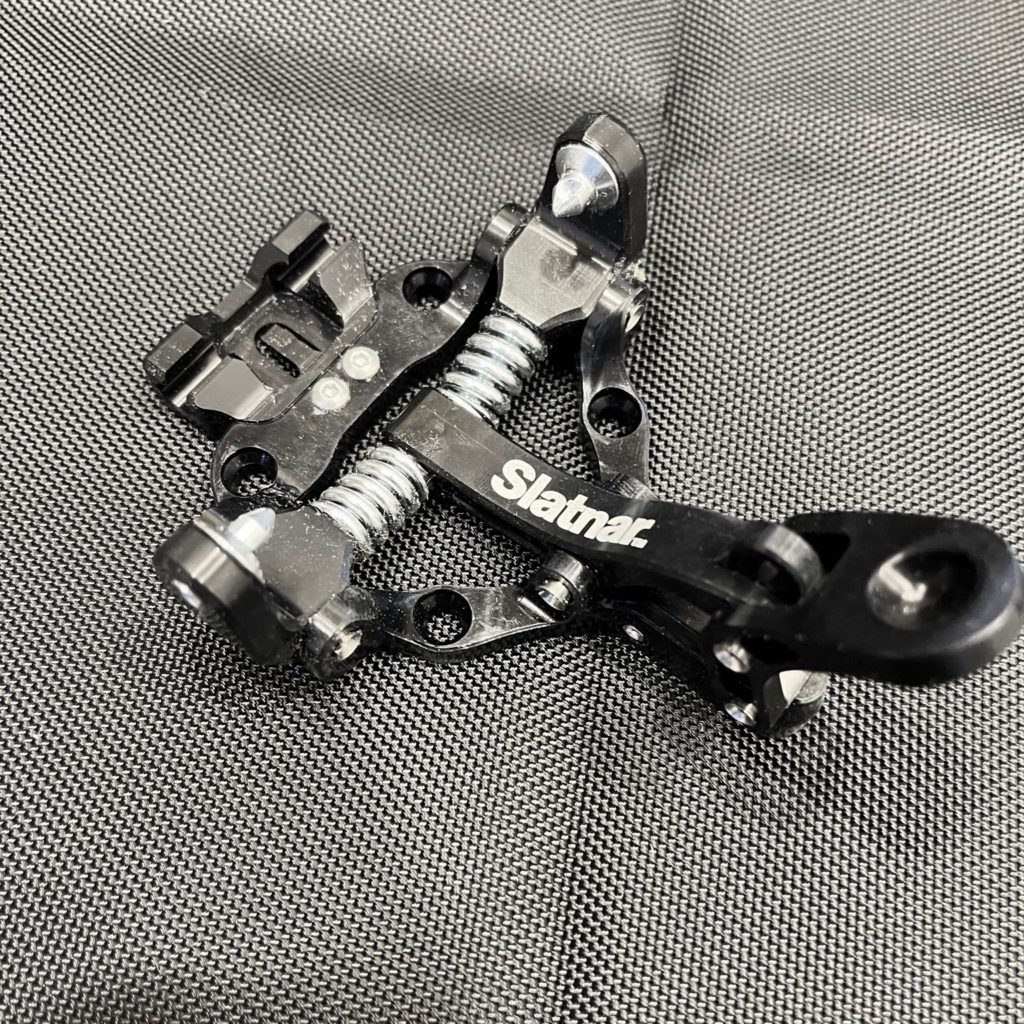
On to the bindings themselves. The best descriptor I have heard is that the Slatnar’s are akin to a super beefy Salomon MTN. It’s not so much super beefy in weight, which comes in at 335g/binding, but rather in appearance and features. The Slatnar binding checks many boxes we are looking for these days. It features magnetic risers with flat mode+2 risers without spinning the heel, a robust “freeride spacer,” a long adjustment track with 50mm of fore/aft adjustment, a wide screw pattern in the toe and heel, which should reduce torque and offer an extra solid platform on wider skis, and a zero gap setup with length compensation springs. What the Slatnar doesn’t have is brakes, adjustable release (though lateral and vertical release values are independently changeable with spare parts), or independent pins (it uses a U-spring).
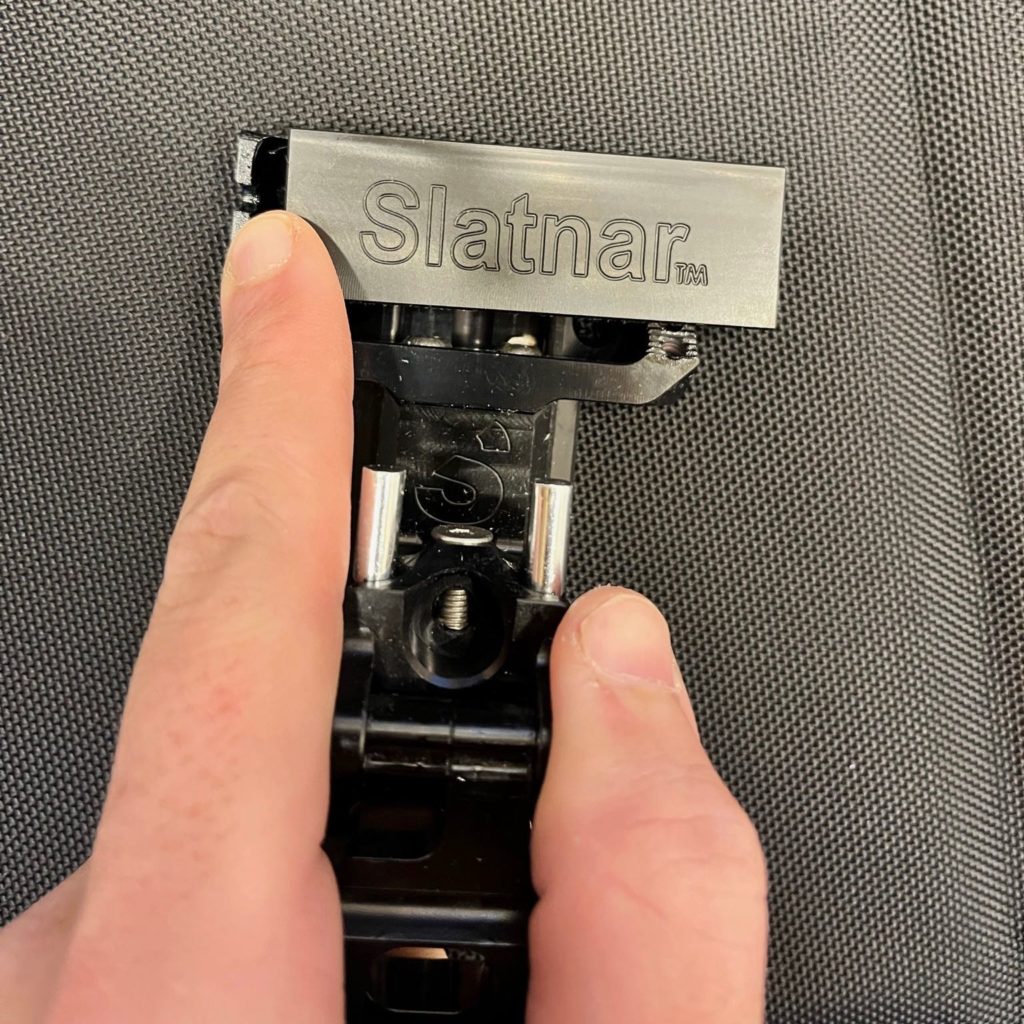
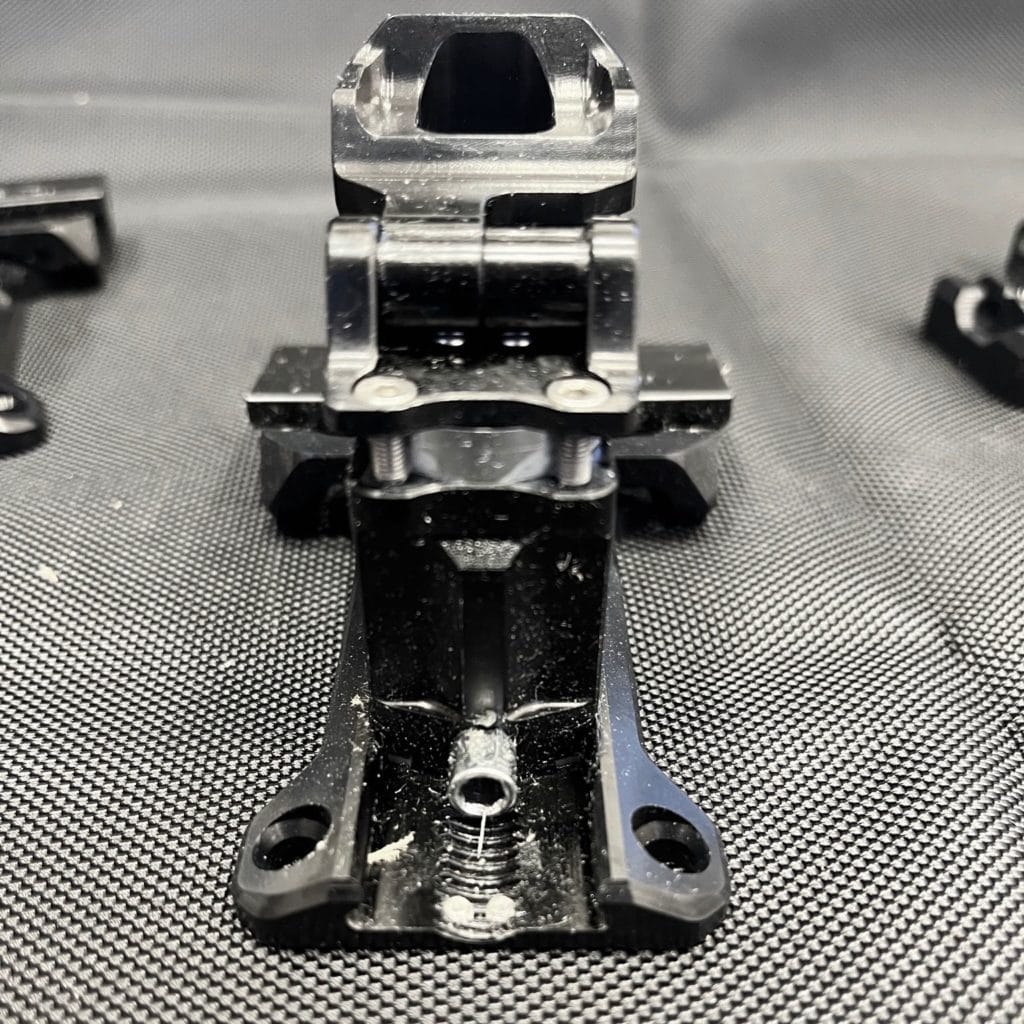
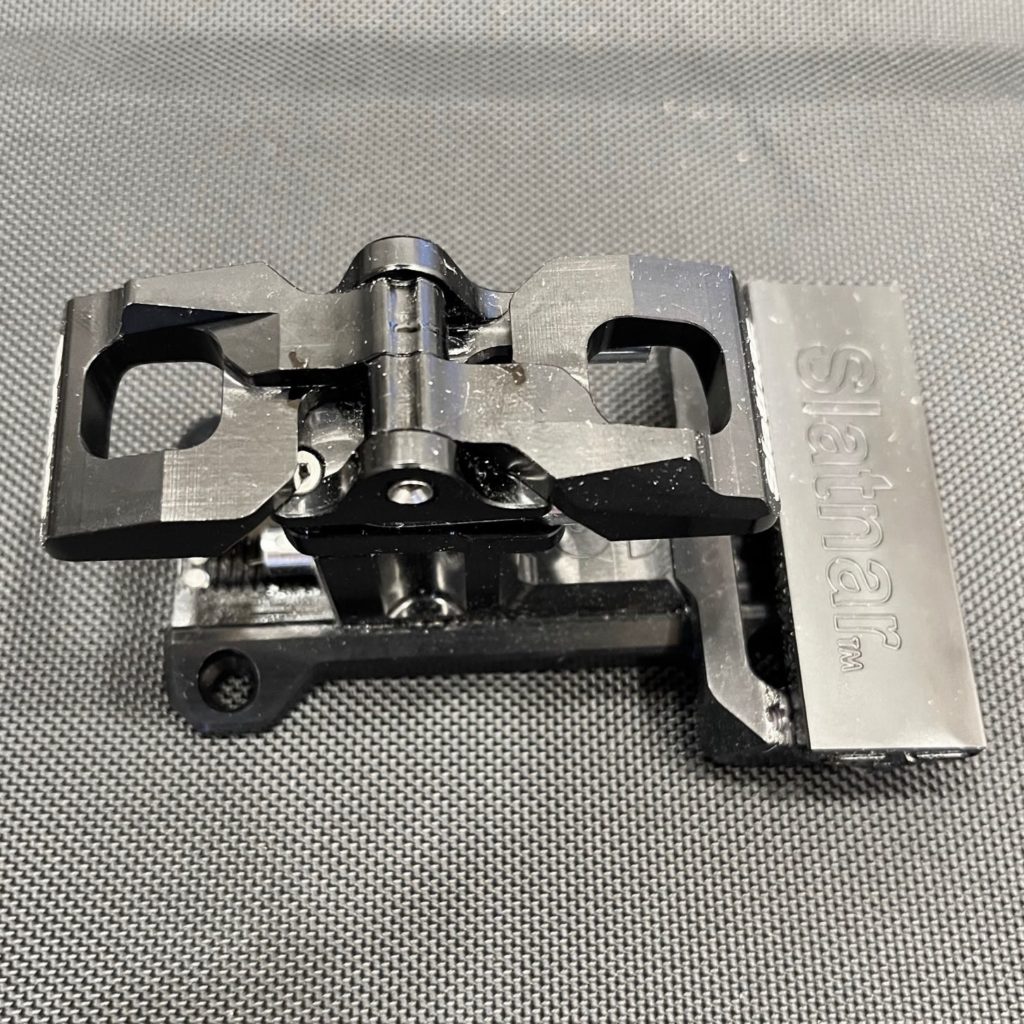
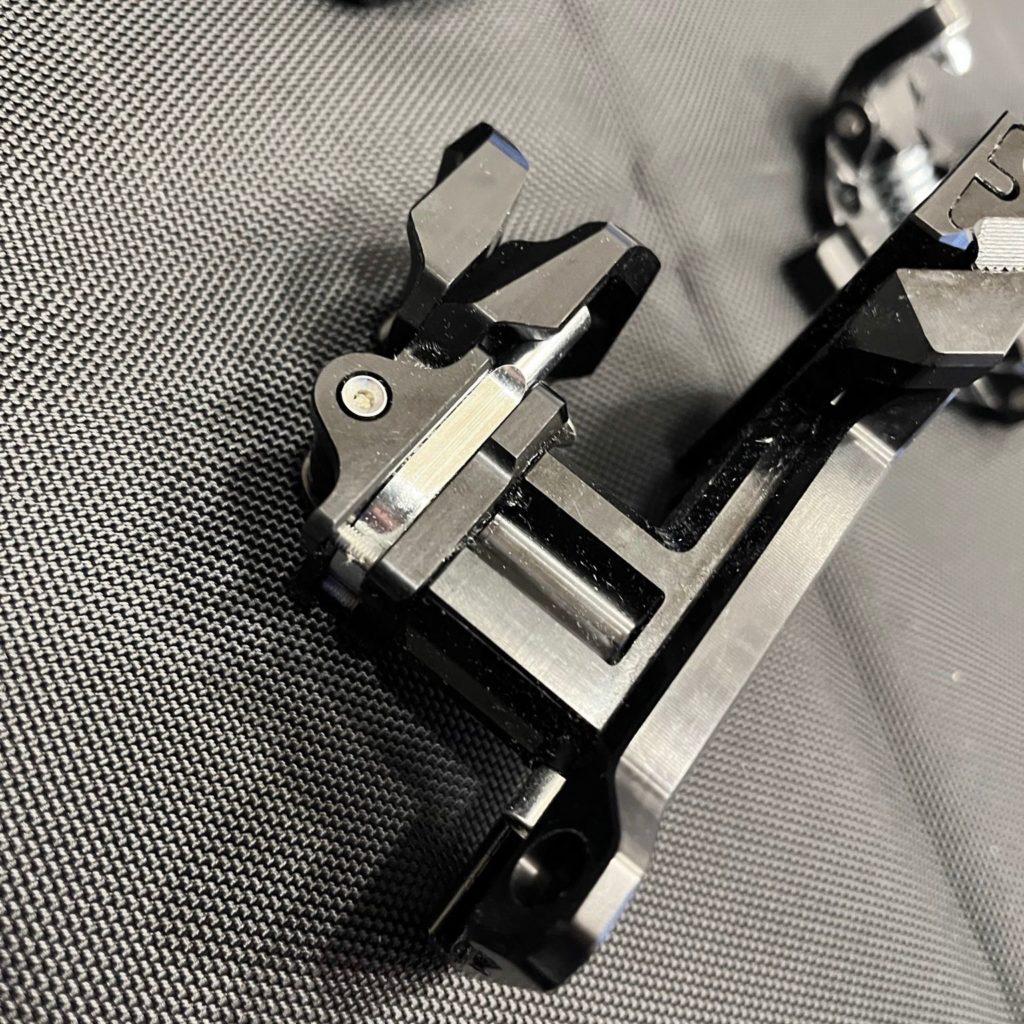
For this ski tourist, this feature set is exactly what I am looking for when I step up from a race style binding. Backtracking to the Black Crows Solis I am testing this winter, Julian Regnier emphasized the need for “good kit” and a solid heel piece on these stiff, precise skis. Upon seeing the Slatnar binding on the TGR Forum, I knew this was what my Solis needed.
I will plan to keep readers updated as I get the Slatnar binding on snow, especially if I run into any issues. We are excited to have more brands enter the pin binding market–it pushes the whole industry to improve, which benefits all of us.
Slatnar Specs
Weight: 335g (verified)
Release Values: Fixed at 5-6, 7-8 or 9-10
Ski Crampons: Dynafit compatible adapter included
Heel Risers: Flat + 2
Mount Pattern (WxL, mm): toe- 41×36, heel- 36.5×73
Delta (heel-toe, mm): +10.5

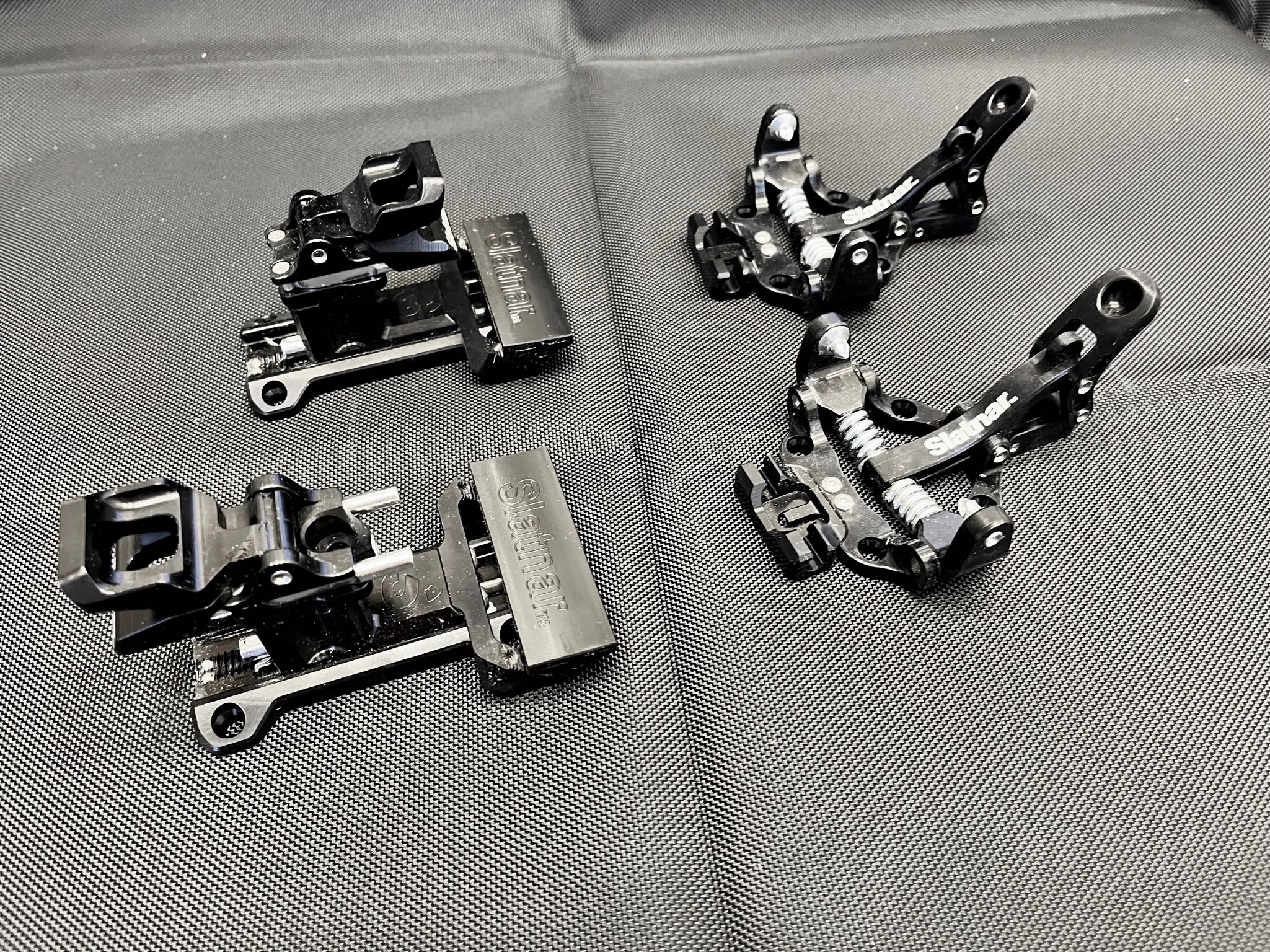
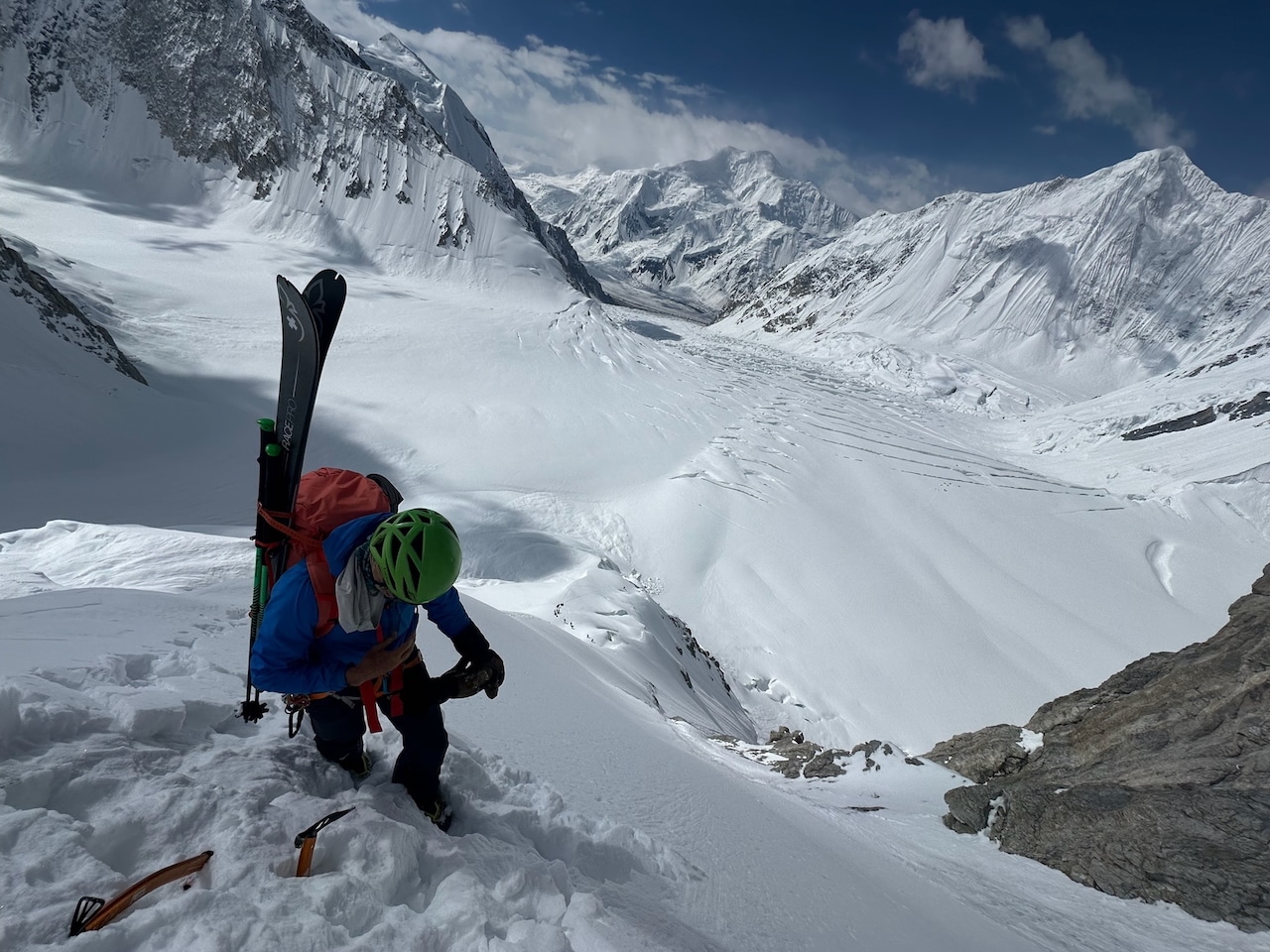
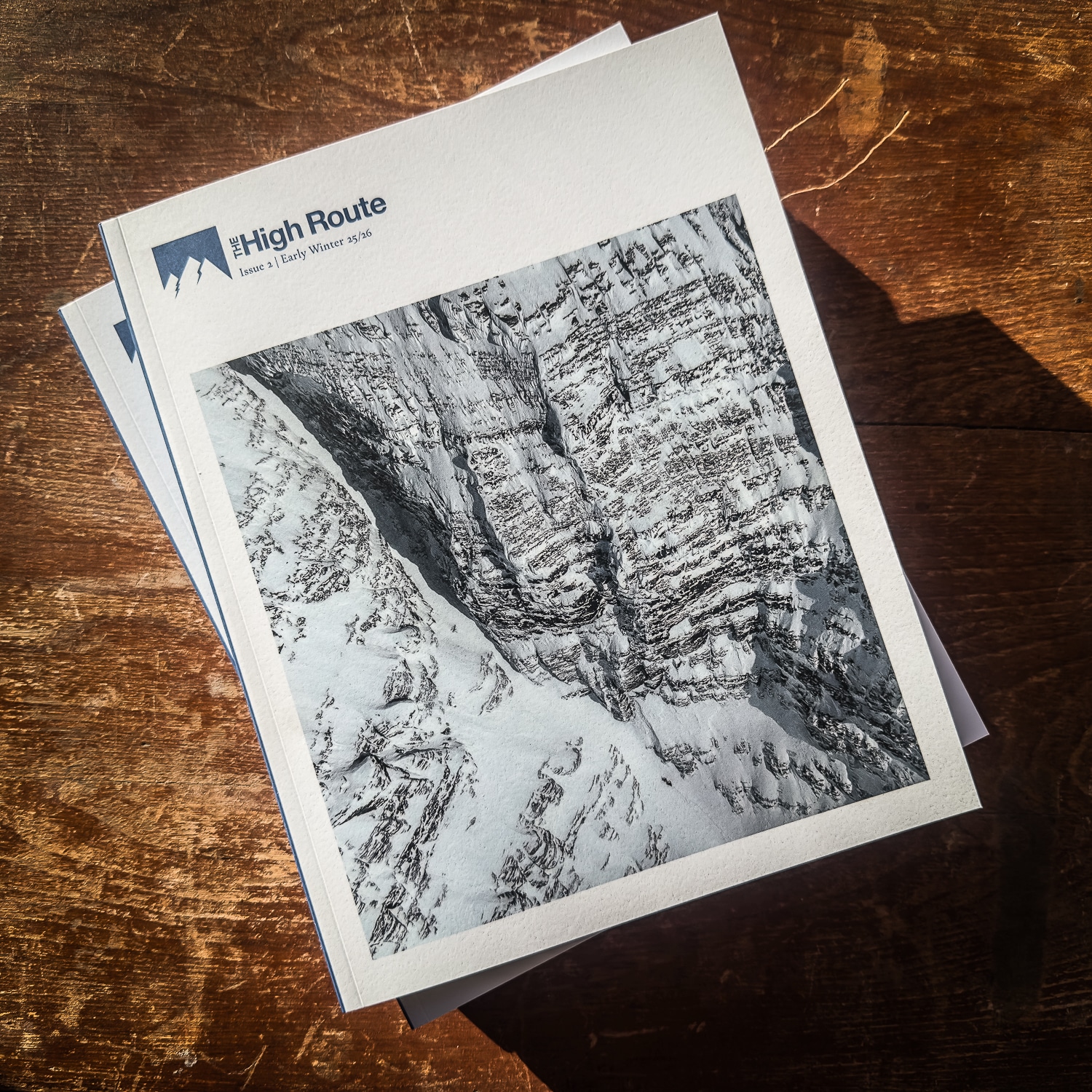


Leave a Reply
You must be logged in to post a comment.